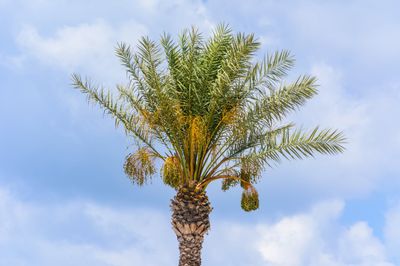Fertilizers for Palms
Palm trees are a famous icon for many tropical locations. However, nutrients are quickly leached out of sandy soils, especially in regions with heavy seasonal rains. In regions like this, palm trees can become seriously deficient in certain nutrients. Nutrient deficiencies can cause numerous problems, affecting the overall health and appeal of palm trees. Like all plants, palm trees require a combination of nitrogen, phosphorus, potassium, and micronutrients for optimal growth. Deficiencies of one or more of these nutrients can be seen on the large foliage of palm trees. Palm trees are quite prone to magnesium deficiencies, which cause older foliage to turn yellow to orange, while newer foliage may retain a deep green color. Potassium deficiency in palm trees may be displayed as yellow to orange spots on all the foliage. A manganese deficiency in palm trees will cause the new foliage of palms to turn yellow and new shoots to wither. All these problems are not just unappealing, they can also lead to defoliation and the slow death of palm trees if not corrected.
How to Fertilize Palms
Sandy soils drain very quickly, and vital nutrients drain away right along with the water. For this reason, it is not very effective to water in fertilizer when feeding a palm tree, as the plant’s roots won’t have adequate time to soak them up. Instead, it is recommended that you use slow-release fertilizer that is specifically formulated for palms when fertilizing palm trees. These are available as granules, pellets, or spikes. They deliver small doses of nutrients to palm roots over an extended period of time. Granules or pellets should be applied to the soil directly above the root zone, under the canopy. Palm tree fertilizer should be applied one to three times a year, depending on the specific brand’s instructions. Some slow-release fertilizers may say “feeds up to 3 months,” for example. You would apply a fertilizer like this more often than one that “feeds up to 6 months.” Generally, the initial dose of palm fertilizer would be applied in early spring. If only two feedings are required, the second dose of palm tree fertilizer would be applied in midsummer. However, it is always important to follow the instructions on the label of the specific fertilizer you are using. Over-fertilizing can be more harmful than not fertilizing at all.
